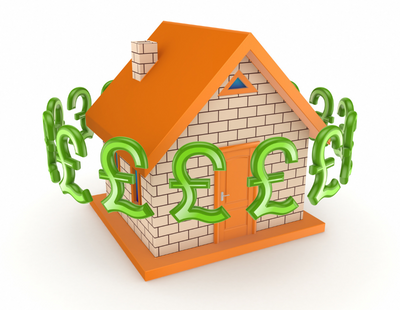3. The number of property sales this year is down 21 per cent against 2022;
4. Mortgage-backed sales are likely to be 28 per cent lower than last year due to higher rates, while cash sales won’t be hit;
5. Despite this, faster wage growth is improving housing affordability. Lower mortgage rates are key to boosting market activity in 2024.
In detail it says that the market continues to feel the impact of higher mortgage rates and cost-of-living pressures. It’s resulting in weaker demand from buyers, fewer sales and very low house price growth.
In the last four weeks or so, demand from buyers is 34 per cent lower than average in the same period over the last five years.
The number of agreed property sales is down 20 per cent.
Annual UK house price growth of 0.1 per cent is a virtual standstill. This is the lowest annual growth rate for 11 years, since August 2012.
There is a clear north-south divide in house price inflation. Every region in the South of England has seen house prices fall by up to 1.0 per cent in the last year.
But all other regions and countries of the UK are posting low single-digit house price growth. Scotland seeing the highest house price growth of 1.7 per cent.
This pattern reflects the greater impact of higher mortgage rates on higher-value housing markets.
A renter buying the home they rent would find it cheaper to buy than rent in the six UK regions and countries with the lowest house prices.
In Scotland and the North East, average mortgage repayments are up to 18 per cent lower than rental costs. This supports access to the housing market and demand for homes.
In contrast, it is more expensive to buy a home than to rent across all areas of southern England and the Midlands. In London, the average mortgage repayment is 24 per cent higher than monthly rent.
Zoopla says this is a key reason why house prices will fall the most across the South of England.
While house price growth has slowed rapidly over the last year, the primary impact of higher mortgage rates has been a lower number of sales - down 21 per cent compared to last year, although still on track for a million completions in 2023.
It will be the lowest number of property sales since 2012 and the equivalent of every household moving once every 23 years.
This fall is largely from mortgaged buyers: the portal expects the number of mortgaged sales to drop 28 per cent on last year. On the other hand, cash sales will fall just one per cent compared to 2022.
Homeowners with a mortgage typically account for a third of annual property sales. This group is under less pressure to move as they already own a home. Where possible, many of them will wait for mortgage rates to improve before they move.
Landlords are also being squeezed by higher mortgage rates. Mortgaged buy-to-let purchases make up around 8.0 per cent of property sales in the UK.
But buy-to-let investors in southern England now need to have equity of 40-50 per cent of the property’s value to get the numbers to stack up. As a result, new investments will be lower this year.
With more landlords selling previously rented homes, there is more supply of homes that appeal to first-time buyers. These are typically priced 25 per cent lower than the wider housing market.







.jpg)













Join the conversation
Be the first to comment (please use the comment box below)
Please login to comment